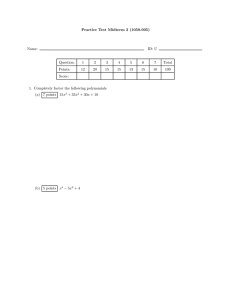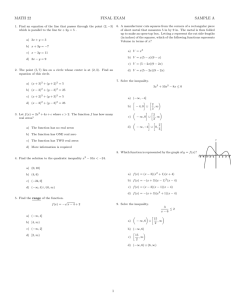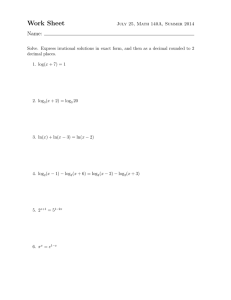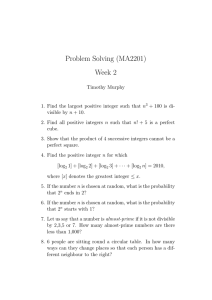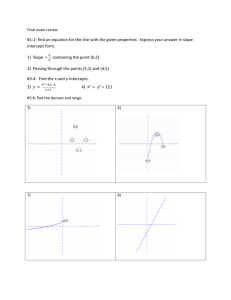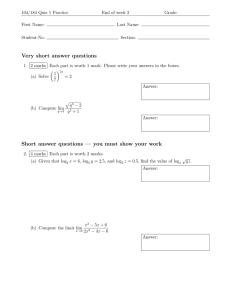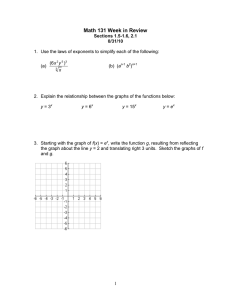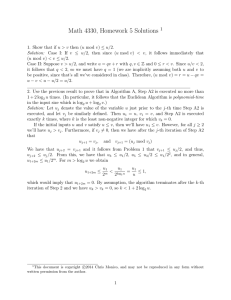Proofs
advertisement
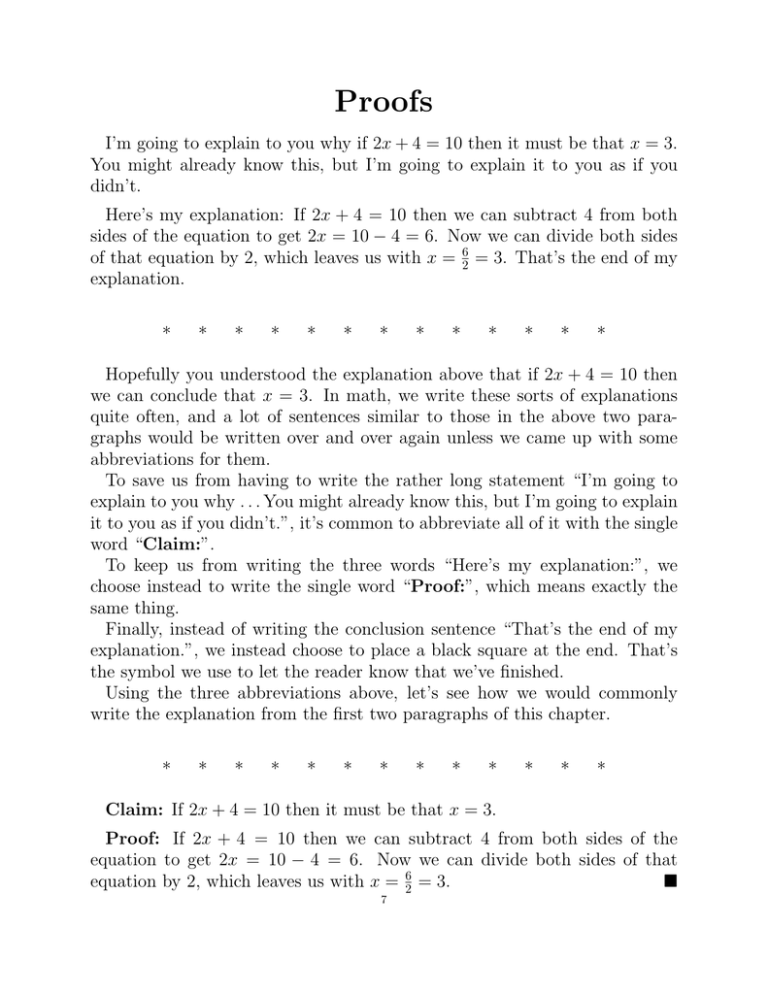
Proofs I’m going to explain to you why if 2x + 4 = 10 then it must be that x = 3. You might already know this, but I’m going to explain it to you as if you didn’t. Here’s my explanation: If 2x + 4 = 10 then we can subtract 4 from both sides of the equation to get 2x = 10 4 = 6. Now we can divide both sides of that equation by 2, which leaves us with x = 62 = 3. That’s the end of my explanation. * * * * * * * * * * * * * Hopefully you understood the explanation above that if 2x + 4 = 10 then we can conclude that x = 3. In math, we write these sorts of explanations quite often, and a lot of sentences similar to those in the above two paragraphs would be written over and over again unless we came up with some abbreviations for them. To save us from having to write the rather long statement “I’m going to explain to you why . . . You might already know this, but I’m going to explain it to you as if you didn’t.”, it’s common to abbreviate all of it with the single word “Claim:”. To keep us from writing the three words “Here’s my explanation:”, we choose instead to write the single word “Proof:”, which means exactly the same thing. Finally, instead of writing the conclusion sentence “That’s the end of my explanation.”, we instead choose to place a black square at the end. That’s the symbol we use to let the reader know that we’ve finished. Using the three abbreviations above, let’s see how we would commonly write the explanation from the first two paragraphs of this chapter. * * * * * * * * * * * * * Claim: If 2x + 4 = 10 then it must be that x = 3. Proof: If 2x + 4 = 10 then we can subtract 4 from both sides of the equation to get 2x = 10 4 = 6. Now we can divide both sides of that equation by 2, which leaves us with x = 62 = 3. ⌅ 7 * * * * * * * * * * * * * See, it’s a little bit shorter this way, when we use our abbreviations Claim:, Proof:, and ⌅. This style of writing is also a very recognizable pattern for mathematicians to read. Mathematicians from around the world would recognize what Claim:, Proof:, and ⌅ mean in this context. We’re used to writing in this style, and we’re used to reading math that’s written in this style. Occasionally, since I’m used to writing like this, and since you should become comfortable with reading math that’s written like this, I’ll use the abbreviations Claim:, Proof:, and ⌅ in this text. Now let’s see one more example of this writing style. Claim: The roots of p(x) = x2 2x 3 are 1 and 3. Proof: Remember that a root of the polynomial p(x) is a number ↵ such that p(↵) = 0. Now notice that p( 1) = ( 1)2 2( 1) 3 = 1 + 2 3 = 0 which means that 1 is a root of p(x). Also notice that p(3) = 9 6 3 = 0 so that 3 is a root of p(x) as well. Because p(x) is quadratic, it has at most two roots, so it can’t have any more roots than 1 and 3. ⌅ * * * * * * * * * * * * * Writing math in the form described above is commonly called “writing proofs”. As you might already agree, there’s not much to writing proofs. For now, I’ll occasionally write proofs in this text. Later in the semester you’ll be asked to write some proofs of your own, and you’ll just use the format described in this chapter. That’s it. There’s only one catch. Most texts and teachers explain math to students as if the students don’t already know the math being explained. And on homeworks and exams, most students explain math to their teachers as if their teachers already know what’s being explained, and that’s usually fine. When writing a proof however, even if you’re a student writing a homework assignment for your instructor, it is customary to write as if your instructor doesn’t already know the answer. In that way, writing proofs is a good exercise. It doesn’t require any sort of mathematical expertise beyond what you’d already know for a course, and it gives you practice at writing to 8 someone who knows as much or less than you do. That’s the most important type of writing. It’s the sort of writing that you’ll do most often in your life. 9 Exercises If a is a positive real number, x is a real number, and n and m are positive whole numbers then p p n 1 a x = x and a m = ( m a)n = m an a Find the following powers: 1.) 2 1 2 1 2.) 9 2 5.) 125 4 3 6.) 4 2 3.) 8 3 2 7.) 81 4.) 8 3 3 4 8.) 103 If a is a positive real number, and if a 6= 1, then there is a logarithm of base a which is a function that we name loga and that satisfies the following properties: loga (ax ) = x if x is a real number, and aloga (y) = y if y > 0 As an example, we know that 23 = 8. Therefore, log2 (8) = 3 because log2 (8) = log2 (23 ) = 3. Find the following logarithms: 9.) log2 (2) 10.) log2 (4) 11.) log2 (8) 12.) log2 (16) 13.) log2 (32) 14.) log2 (64) 15.) log2 (1) 16.) log2 ( 12 ) 17.) log2 ( 14 ) 18.) log2 ( 18 ) p 19.) log2 ( 2 2) p 20.) log2 ( 3 2) p 21.) log2 ( 4 2) p 22.) log2 ( 2 8) 23.) log2 25.) log3 (9) 26.) log3 1 p 2 27 1 p 3 16 27.) log10 (1, 000) 10 24.) log2 1 p 5 8 p 28.) loge ( 2 e)

